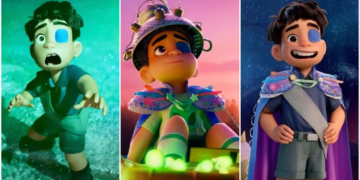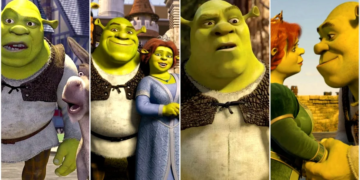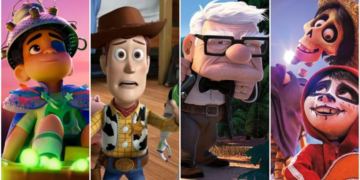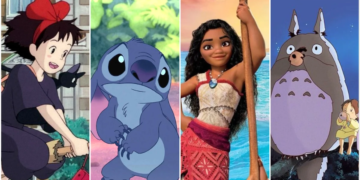Let’s face it—we’ve all lost at least one perfectly good afternoon to the delightfully absurd world of SpongeBob SquarePants, cracking up as an eternally optimistic sponge and his dim-witted starfish bestie stumble through misadventures under the sea. But here’s the thing: these characters weren’t just plucked from thin air (pun intended), so what are the real-life SpongeBob character inspirations? Beneath the pineapple-domed madness lies Hillenburg’s trifecta: the physical comedy of vaudeville, real marine-life wonders, and imagination so vibrant it could power a jellyfish light show.
Think about it: SpongeBob himself is basically a cartoon love letter to golden-age slapstick, channeling the rubber-limbed physical comedy of Jerry Lewis and the relentless cheer of Pee-wee Herman. Patrick Star? A walking tribute to every lovable doofus sidekick in comedy history, amped up to delightfully new heights. Even Squidward’s perpetual misery feels like a marine twist on Charlie Brown’s grumpiest moods.
Table of Contents
ToggleThe Science Beneath the Silly
And that’s just the comedy roots. Dig deeper into the SpongeBob character inspirations, and you’ll find Stephen Hillenburg’s genius at work, where marine biology meets madness. As a former marine science educator, Hillenburg baked real oceanic logic into Bikini Bottom’s chaos. SpongeBob’s absorbent, square physique? Straight from actual sea sponge anatomy. Sandy’s treedome and air helmet? A playful take on how land mammals (like her Texas squirrel self) would survive underwater. Mr. Krabs weaponizes real crab chaos into pure profit—The Krusty Krab is just capitalism in a seashell.
That next time ‘CHOCOLATE!’ bursts from your lips or the jellyfishing theme gets stuck in your head, realize you’re channeling the perfect storm of vaudeville humor, real ocean science, and beautiful, beautiful madness. Now, who’s ready to dive deeper? I NOMINATE YOU.
SpongeBob SquarePants: Part Chaplin, Part Sea Sponge, All Chaos
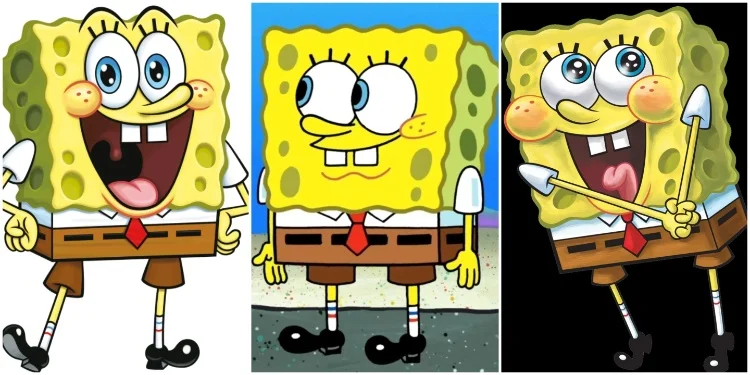
Picture this: A character with the wide-eyed innocence of a kid on a sugar rush, the physical comedy of a silent film star, and the bubbly enthusiasm of a golden retriever. That’s SpongeBob in a nutshell—or should we say, in a sponge square.
Before venturing into animation, SpongeBob SquarePants creator Stephen Hillenburg worked as a marine biology teacher. And originally, SpongeBob wasn’t even square. In Hillenburg’s early educational comics, he created Bob the Sponge—a more realistic version of a sea sponge, round and blob-like. However, while developing the cartoon, Hillenburg decided that a kitchen sponge’s square, goofy shape simply worked better on screen—and as it turns out, was a merchandising goldmine.
But, SpongeBob’s character personality? That’s where things get really interesting.
Hillenburg was a massive fan of silent-era comedy. SpongeBob’s exaggerated expressions and gleeful awkwardness are largely inspired by Stan Laurel from the Laurel and Hardy duo. You can see it in the way SpongeBob fumbles through life with innocence and wonder, making even a simple bubble-blowing session feel like a grand performance. Then comes the Jerry Lewis influence—the master of slapstick and wild, over-the-top facial contortions. How did SpongeBob go from cheerful to completely unhinged in mere seconds? And of course, we can’t leave out the wacky energy and offbeat humor of Pee-wee Herman, whose squeaky-voiced persona echoes through SpongeBob’s most hyperactive moments.
Oh, and that iconic name we all know and love? It was almost SpongeBob. But legal issues (specifically, a mop brand) forced a last-minute change. And so, SpongeBob SquarePants was born—arguably one of the most recognizable names in television and animation history.
ALSO READ: How Is Shrek A Disney Parody?
Patrick Star: Bikini Bottom’s Accidental Philosopher (SpongeBob Character Inspirations)
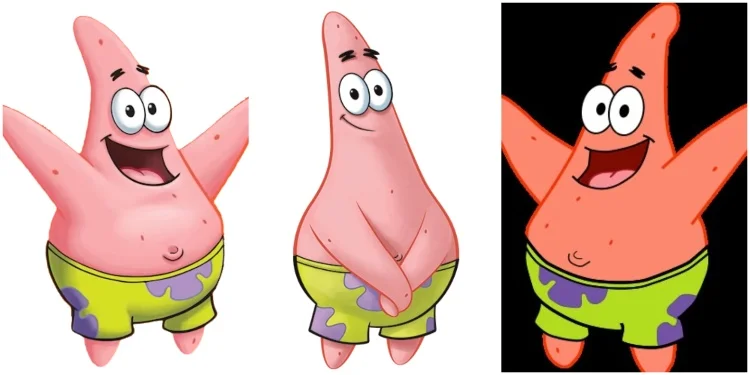
Patrick is the lovable loaf we didn’t know we needed. Where SpongeBob is a walking ray of undersea sunshine, Patrick operates on a wavelength of such glorious ignorance, you’d swear he’s trolling the entire ocean. Their chemistry works like magic—think of it as combining a sugar rush with a midday nap.
Patrick’s lines—such as the unforgettable, “Is mayonnaise an instrument?”—are the stuff of meme legend. But his clueless wisdom often walks a fine line between ridiculous and strangely deep. It’s like he’s accidentally tapped into some bizarre, cosmic understanding of life, all while living under a literal rock.
Hillenburg’s decision to make Patrick a starfish wasn’t just random. Unlike most creatures, real-life starfish lack a centralized brain—their nervous system is distributed across their arms. In simpler terms? They’re slow-moving, not exactly known for their smarts, and yes, they tend to stick around in one place. Patrick’s laziness and lack of awareness? Weirdly accurate.
From turning wallets into fashion accessories to inventing bonkers theories about jellyfish, Patrick is the kind of stupid genius that only works in a cartoon—but we wouldn’t want him any other way.
Squidward Tentacles: The Cynical Artist with a Perpetual Scowl
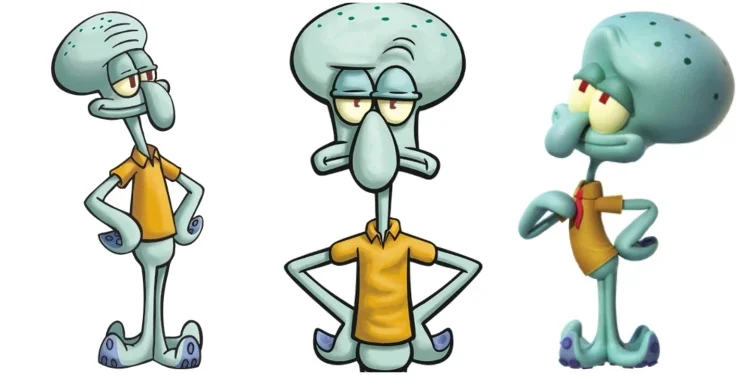
If you’ve ever had a job you hated or lived next to a neighbor who never stopped talking, chances are you’ve had a Squidward moment. With his flat voice, constant sighs, and dramatic clarinet solos, Squidward is the relatable pessimist in a sea of overwhelming cheer.
Ironically, Squidward is technically an octopus, not a squid—despite what his name might suggest. Hillenburg chose the name “Squidward” simply because “Octoward” didn’t have the same comedic ring to it. Also, animating eight legs was too much of a hassle, so he was given six limbs for simplicity. Animation logic wins again.
While Squidward doesn’t directly channel a specific comedy icon, his sarcastic edge and social exhaustion scream adult humor. He’s the character who mirrors our post-workday blues, the embodiment of “please don’t talk to me” energy. Still, deep down, Squidward isn’t just grumpy—he’s ambitious. Squidward Tentacles wants to be seen, appreciated, and respected for his art. And even if the world doesn’t always notice, we do.
Mr. Krabs: The Greedy Capitalist with a Soft Spot (SpongeBob Character Inspirations)
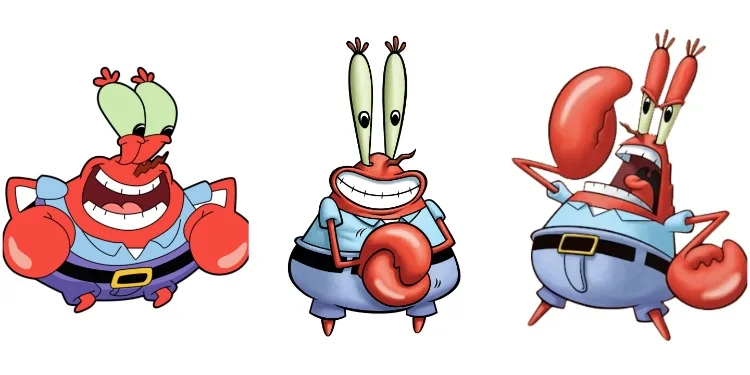
Ah, Eugene H. Krabs—restaurant tycoon, money hoarder, and single father to a whale (don’t ask). If there’s one resident in Bikini Bottom who truly grasps the power of a single dollar, it’s Mr. Krabs. In fact, he probably has that dollar framed somewhere in his office.
Mr. Krabs embodies capitalism gone unchecked—a cautionary tale of greed taken to its most absurd extremes.. He’ll do anything to save or make money—even if that means selling SpongeBob’s soul for pocket change or serving recycled chum (yikes). The core of his never-ending war with Plankton? That coveted Krabby Patty formula—locked down tighter than Fort Knox and defended like the nuclear codes.
The real-life inspiration? Crabs in the wild are fiercely territorial and extremely resilient—traits that Krabs amplifies to absurd degrees. And let’s not forget the nautical theme: he’s a former Navy man, and that salty sailor voice? Classic caricature of a tough-as-nails seafarer. Just add claws.
Sandy Cheeks: Texas-Sized Intellect and Karate Moves
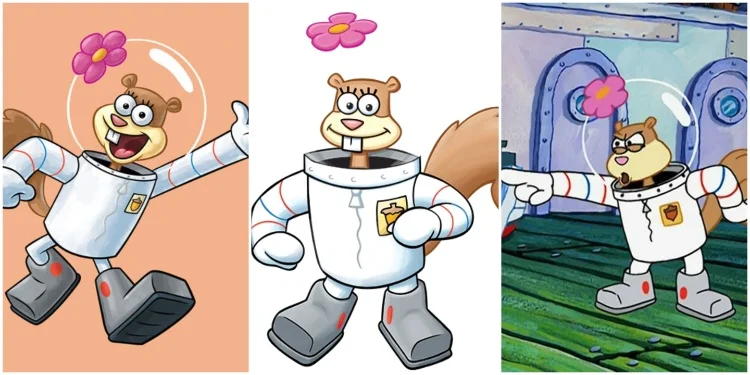
Sandy is everything a land squirrel shouldn’t be—living under the ocean, doing science experiments, and practicing karate with a sea sponge. And yet, it totally works. Her character is a clever nod to the idea of the “fish out of water” (pun intended), but she’s far from helpless. People sleep on Sandy, but she’s easily one of the most resourceful and brilliant characters in the series. Her southern drawl, space suit, and love for acorns make her a proud Texan stereotype—but one that flips expectations. She’s a woman in STEM, a survivalist, and a martial arts pro all rolled into one.
Sandy’s glass dome habitat and air helmet reflect actual scientific concepts about pressurization and oxygen balance—Hillenburg’s marine biology background strikes again. In a way, Sandy represents adaptability, thriving in an environment that should’ve destroyed her. Iconic, right?
Plankton: The Miniature Megalomaniac with Big Dreams
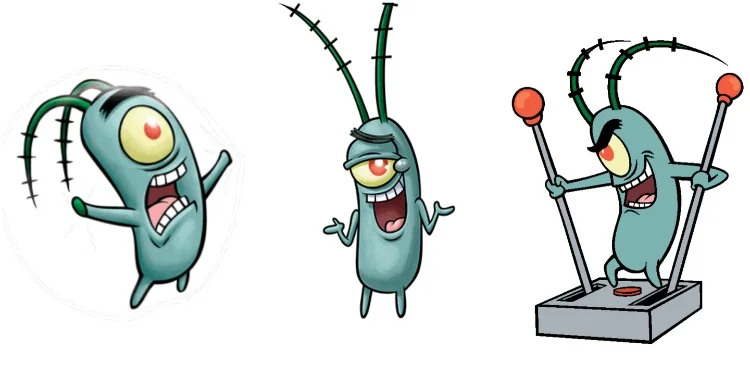
If you ever need proof that size doesn’t determine ambition, look no further than SpongeBob SquarePants’ most determined (and tiniest) villain: Sheldon J. Plankton. Clocking in at roughly the size of a thumbtack, this one-eyed micro-menace packs more sheer, unrelenting drive than a dozen Bond villains combined. The catch? His evil schemes—ranging from hypnotic fast-food menus to robot doppelgängers—rarely escalate beyond “mild inconvenience” for the Krusty Krab crew.
For twenty years, Plankton’s entire existence has revolved around one glorious failure: stealing the Krabby Patty formula with increasingly spectacular disasters. Whether he’s launched into space by a sneeze, outsmarted by a sea sponge with the attention span of a goldfish, or foiled by his own malfunctioning tech, defeat is his constant companion. Yet, like a single-celled Sisyphus, he never. Gives. Up.
And that’s why we low-key love him.
Of course, we can’t help but chuckle when his ridiculously elaborate Chum Bucket contraptions inevitably backfire in spectacular fashion (for the umpteenth time). But buried beneath the sarcasm, the Napoleon complex, and the world’s pettiest rivalry with Mr. Krabs, there’s something weirdly inspiring about Plankton. He’s the ultimate underdog—if the underdog were also a narcissistic genius with questionable morals. Admit it: at least once, you’ve caught yourself thinking, “Just let the guy have one win!”
Fun (and nerdy) side note: In real-life marine ecosystems, plankton may be microscopic, but they’re the backbone of the ocean’s food chain—small but essential. Fittingly, Sheldon J. Plankton is the same: a tiny force of chaos without whom SpongeBob just wouldn’t be the same. So here’s to you, Plankton. Keep scheming. Keep failing. Keep being the most entertainingly persistent villain in cartoon history.
(One day—maybe, just maybe—that formula will be in your hands.)
SpongeBob Character Inspirations: Why SpongeBob Still Soaks Up Our Love?
What makes SpongeBob SquarePants more than just a children’s cartoon? The secret lies in its layered brilliance. Hillenburg took his passion for marine science, mixed it with timeless comedic archetypes, and created a universe where every character feels oddly real, even when they’re ridiculously absurd. Whether you’re 8 or 38, the characters resonate on different levels. They’re funny, flawed, and somehow familiar. So next time you’re watching SpongeBob break into a song about pizza delivery or see Patrick invent a new way to sit, remember—there’s more truth and thought behind the madness than you might think.
What do you think about the SpongeBob character inspirations? Subscribe to AnimeMangaToon for more fascinating reviews and webtoon recommendations!

